<Back to Index>
- Chemist Alexander William Williamson, 1824
- Physicist and Philosopher Ernst Mach, 1838
PAGE SPONSOR
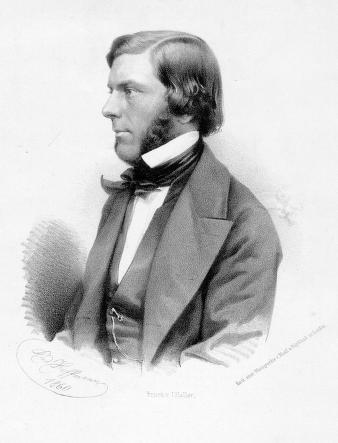
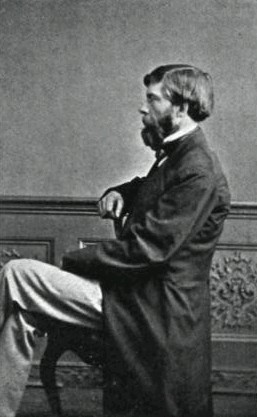
Alexander William Williamson FRS (1 May 1824 – 6 May 1904) was an English chemist of Scottish descent. He is best known today for the Williamson ether synthesis.
After working under Leopold Gmelin at Heidelberg, and Justus von Liebig at Gießen, Williamson spent three years in Paris studying higher mathematics under Comte. In 1849, Williamson was appointed professor of practical chemistry at University College, London, and from 1855 until his retirement in 1887 he also held the professorship of chemistry. He died on 6 May 1904, at Hindhead, Surrey, England, and was buried at Brookwood Cemetery in Surrey.
Williamson is credited for his research on the formation of ether by the interaction of sulphuric acid and alcohol, known as the Williamson ether synthesis. He regarded ether and alcohol as substances analogous to and built up on the same type as water, and he further introduced the water - type as a widely applicable basis for the classification of chemical compounds. The method of stating the rational constitution of bodies by comparison with water he believed capable of wide extension, and that one type, he thought, would suffice for all inorganic compounds, as well as for the best known organic ones, the formula of water being taken in certain cases as doubled or tripled.
So far back as 1850 he also suggested a view which, in a modified form, is of fundamental importance in the modern theory of ionic dissociation, for, in a paper on the theory of the formation of ether, he urged that in an aggregate of molecules of any compound there is an exchange constantly going on between the elements which are contained in it; for instance, in hydrochloric acid each atom of hydrogen does not remain quietly in juxtaposition with the atom of chlorine with which it first united, but changes places with other atoms of hydrogen. A somewhat similar hypothesis was put forward by Rudolf Clausius about the same time.
For his work on etherification, Williamson received a Royal medal from the Royal Society in 1862, of which he became a fellow in 1855, and which he served as foreign secretary from 1873 to 1889. He was twice president of the London Chemical Society, from 1863 – 1865 and from 1869 - 1871.
In 1863 five students from the Chōshū clan in Japan came to study in London under the guidance of Professor Williamson. They were Ito Shunsuke (later Ito Hirobumi), Inoue Monta (later Inoue Kaoru), and Yamao Yozo. Endo Kinsuke and Nomura Yakichi (later Inoue Masaru). They all later made enormous contributions to the modernization of Japan.
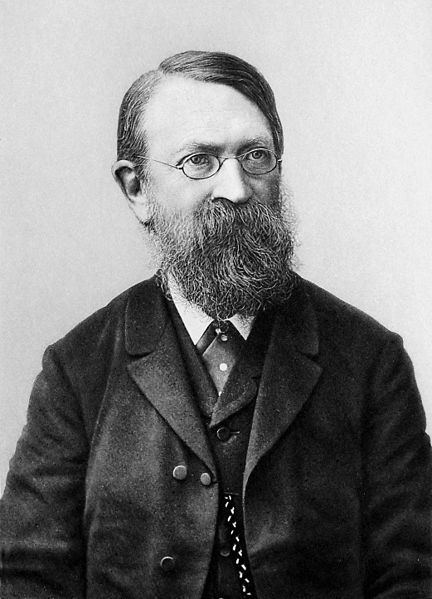
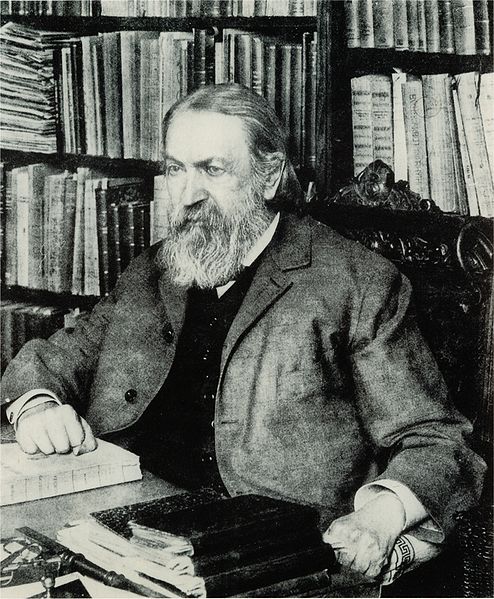
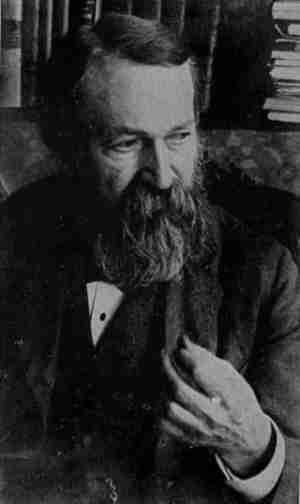
Ernst Mach (February 18, 1838 – February 19, 1916) was an Austrian physicist and philosopher, noted for his contributions to physics such as the Mach number and the study of shock waves. As a philosopher of science, he was a major influence on logical positivism and through his criticism of Newton, a forerunner of Einstein's relativity.
Ernst Waldfried Josef Wenzel Mach was born in Chrlice (German: Chirlitz), Moravia (then in the Austrian empire, now part of Brno in the Czech Republic). His father, who had graduated from Charles University in Prague, acted as tutor to the noble Brethon family in Zlín, eastern Moravia. His grandfather, Wenzl Lanhaus, an administrator of the estate Chirlitz, was also master builder of the streets there. His activities in that field later influenced the theoretical work of Ernst Mach. Some sources give Mach's birthplace as Turas / Tuřany (now also part of Brno), the site of the Chirlitz registry office. Peregrin Weiss baptized Ernst Mach into the Roman Catholic Church in Turas / Tuřany. Despite his Catholic background, he later on became an atheist.
Up to the age of 14, Mach received his education at home from his parents. He then entered a Gymnasium in Kroměříž (German: Kremsier), where he studied for three years. In 1855 he became a student at the University of Vienna. There he studied physics and for one semester medical physiology, receiving his doctorate in physics in 1860 and his Habilitation the following year. His early work focused on the Doppler effect in optics and acoustics. In 1864 he took a job as Professor of Mathematics in Graz, having turned down the position of a chair in surgery at the University of Salzburg to do so, and in 1866 he was appointed as Professor of Physics. During that period, Mach continued his work in psycho - physics and in sensory perception. In 1867, he took the chair of Experimental Physics at the Charles University, Prague, where he stayed for 28 years before returning to Vienna.
Mach's main contribution to physics involved his description and photographs of spark shock - waves and then ballistic shock - waves. He described how when a bullet or shell moved faster than the speed of sound, it created a compression of air in front it. Using schlieren photography, he and his son Ludwig were able to photograph the shadows of the invisible shock waves. During the early 1890s Ludwig was able to invent an interferometer which allowed for much clearer photographs. But Mach also made many contributions to psychology and physiology, including his anticipation of gestalt phenomena, his discovery of the oblique effect and of Mach bands, an inhibition influenced type of visual illusion, and especially his discovery of a non - acoustic function of the inner ear which helps control human balance.
Mach also became well known for his philosophy, a type of phenomenalism recognizing only sensations as real. This position seemed incompatible with the view of atoms and molecules as external, mind - independent things, and from about 1908 to 1911 Mach's reluctance to acknowledge the reality of atoms was criticized by Max Planck as being incompatible with physics. Some of Mach's criticisms of Newton's position on space and time influenced Einstein, but later Einstein realized that Mach was basically opposed to Newton's philosophy and concluded that his physical criticism was not sound. One of the best known of Mach's ideas is the so called "Mach's principle," concerning the physical origin of inertia. This was never written down by Mach, but was given a graphic verbal form, attributed by Philipp Frank to Mach himself, as, "When the subway jerks, it's the fixed stars that throw you down."
In 1898 Mach suffered from cardiac arrest and in 1901 retired from the University of Vienna and was appointed to the upper chamber of the Austrian parliament. On leaving Vienna in 1913 he moved to his son's home in Vaterstetten, near Munich, where he continued writing and corresponding until his death in 1916. A descendant was Marilyn vos Savant (her father was Joseph Mach), the American writer known for her high IQ and her column in Parade Magazine "Ask Marilyn". She has changed her premarital surname and kept it for life because she thinks daughters should take their mother's surnames and keep them after their marriage.
Most of Mach's initial studies in the field of experimental physics concentrated on the interference, diffraction, polarization and refraction of light in different media under external influences. There followed his important explorations in the field of supersonic
velocity. Mach's paper on this subject was published in 1877 and
correctly describes the sound effects observed during the supersonic
motion of a projectile. Mach deduced and experimentally confirmed the existence of a shock wave which has the form of a cone with the projectile at the apex. The ratio of the speed of projectile to the speed of sound vp/vs is now called the Mach number. It plays a crucial role in aerodynamics and hydrodynamics. He also contributed to cosmology the hypothesis known as Mach's principle.
Mach developed a philosophy of science which became influential in the 19th and 20th centuries. He originally saw scientific laws as summaries of experimental events, constructed for the purpose of making complex data comprehensible, but later emphasized mathematical functions as a more useful way to describe sensory appearances. Thus scientific laws while somewhat idealized have more to do with describing sensations than with reality as it exists beyond sensations. Selections are taken from his essay The Economical Nature of Physical Inquiry, excerpted by Kockelmans and slightly corrected by Blackmore.
| “ | The goal which it (physical science) has set itself is the simplest and most economical abstract expression of facts.
When the human mind, with its limited powers, attempts to mirror in itself the rich life of the world, of which it itself is only a small part, and which it can never hope to exhaust, it has every reason for proceeding economically. In reality, the law always contains less than the fact itself, because it does not reproduce the fact as a whole but only in that aspect of it which is important for us, the rest being intentionally or from necessity omitted. |
” |
| “ | In mentally
separating a body from the changeable environment in which it moves,
what we really do is to extricate a group of sensations on which our
thoughts are fastened and which is of relatively greater stability than
the others, from the stream of all our sensations.
Suppose we were to attribute to nature the property of producing like effects in like circumstances; just these like circumstances we should not know how to find. Nature exists once only. Our schematic mental imitation alone produces like events. |
” |
Mach's positivism also influenced many Russian Marxists, such as Alexander Bogdanov (1873 – 1928). In 1908, Lenin wrote a philosophical work, Materialism and Empirio - Criticism (published 1909), in which he criticized Machism and the views of "Russian Machists".
In accordance with this philosophy, Mach opposed Ludwig Boltzmann and others who proposed an atomic theory of physics. Since one cannot observe things as small as atoms directly, and since no atomic model at the time was consistent, the atomic hypothesis seemed to Mach to be unwarranted, and perhaps not sufficiently "economical". Mach had a direct influence on the Vienna Circle philosophers and the school of logical positivism in general.
Mach is attributed with a number of principles that distill his ideal of physical theorisation — what is now called "Machian physics":
- It should be based entirely on directly observable phenomena (in line with his positivistic leanings)
- It should completely eschew absolute space and time in favor of relative motion
- Any phenomena that would seem attributable to absolute space and time (e.g., inertia, and centrifugal force) should instead be seen as emerging from the large scale distribution of matter in the universe.
The last is singled out, particularly by Albert Einstein as "the" Mach's principle. Einstein cited it as one of the three principles underlying general relativity. In 1930, he stated that "it is justified to consider Mach as the precursor of the general theory of relativity", though Mach, before his death, would reject Einstein's theory. Einstein was aware that his theories did not fulfil all Mach's principles, and no subsequent theory has either, despite considerable effort.
In 1873, independently of each other Mach and the physiologist and physician Josef Breuer
discovered how the sense of balance (i.e., the perception of the head’s
imbalance) functions, tracing its management by information which the
brain receives from the movement of a fluid in the semicircular canals of the inner ear. That the sense of balance depended on the three semicircular canals was discovered in 1870 by the physiologist Friedrich Goltz, but Goltz did not discover how the balance - sensing apparatus functioned.
In the area of sensory perception, psychologists remember Mach for the optical illusion called the Mach band.
More clearly than anyone before (or even since) Mach made the distinction between what he called physiological (specifically visual) and geometrical spaces.
Mach's views on mediating structures inspired B. F. Skinner's strongly inductive position, which paralleled Mach's in the field of psychology.
The lunar crater Mach takes its name from Ernst Mach. So does the visual illusion and the unit for the velocity of sound.